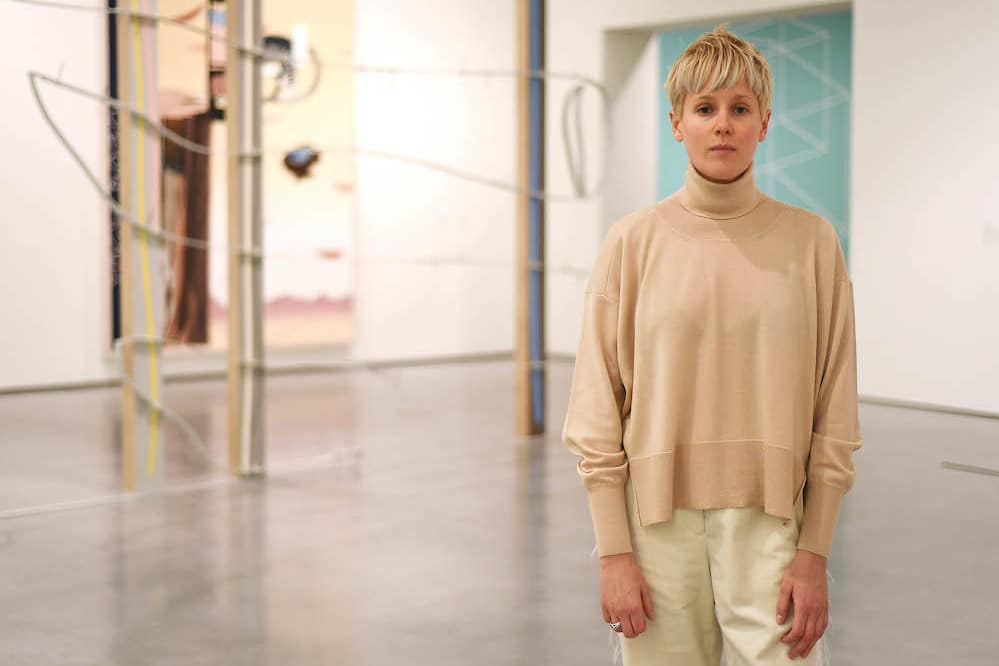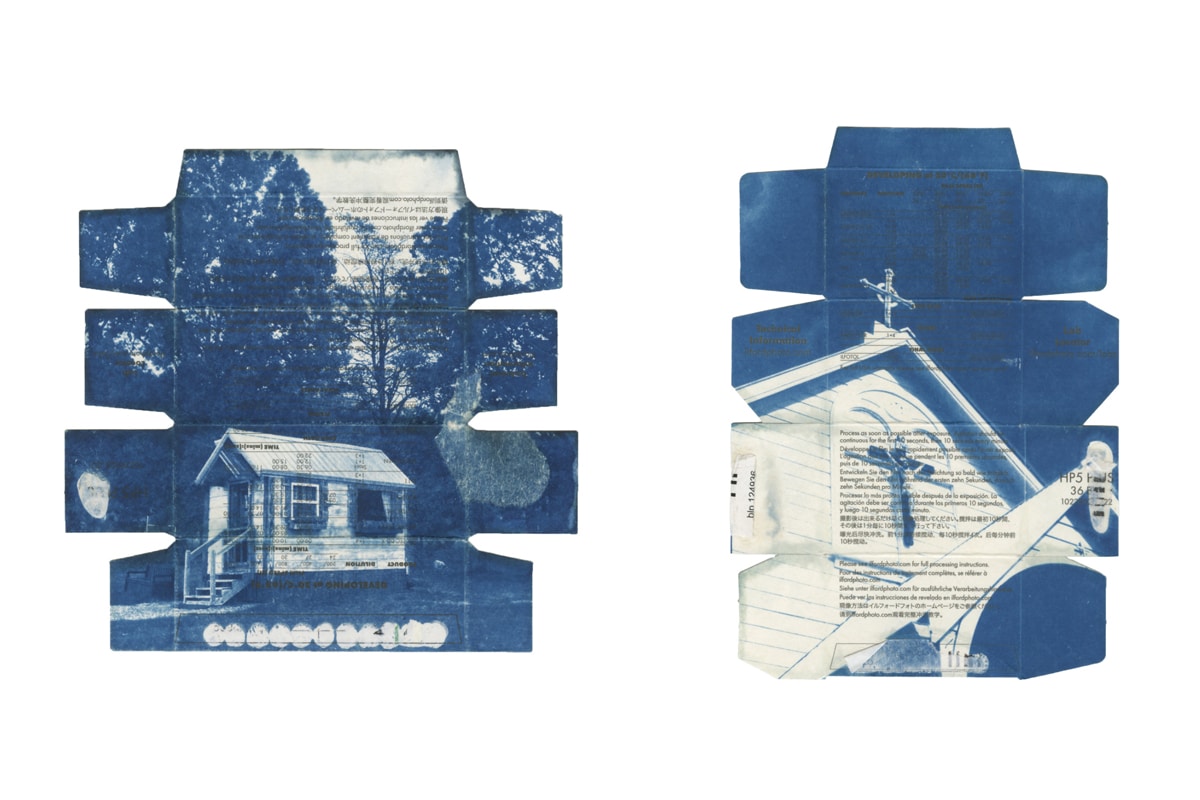Helen Marten, an interdisciplinary artist, just won the 2016 Turner Prize. In a surprising move, she decided to share the monetary winnings with her fellow award nominees.
The Turner is arguably the most prestigious art prize awarded in the UK. After her win, Marten seemed shaken by the eruption of attention. She told CNN, “I’m flattered to be on the shortlist and even more so if my fellow nominees would share the Prize with me. Here’s to a furthering of communality and a platform for everyone.” Marten has also said that she feels “numb” after winning the prize, and that she is relieved to have it over. What would lead an artist to have such a critical and dampened expression to what should be great news? And why did Marten decide to share the prize?
Only a few weeks earlier, Marten won the £30,000 Hepworth Sculpture Prize. She was the youngest sculptor on the shortlist, and she made waves by deciding to share those prize winnings with her fellow nominees.
When her subsequent Turner win was announced on December 6th, the news was met with scrutiny. These are huge accomplishments for a young artist like Marten, who has just turned 31. Furthermore, her work can be intimidatingly complex. The Telegraph suggested that Turner’s art was too “erudite” to interest much of the gallery-going public, and conservative MP Michael Gove criticized it as “modish crap.”
Marten is best known for her installations which synthesize a variety of media. Her work is flush with references, both historical and contemporary. She utilizes video, animation, sculpture, and screen printing. Like a contemporary archaeologist, she takes modern objects and organizes them into complex displays. Her interdisciplinary nature picks up on the tenor of recent trends, as is typical of the artists represented by Greene Naftali, her New York gallery.
Although Marten’s work may seem inaccessible to some, she’s becoming widely known in the art world, and her Turner win has the potential to drive her career quickly forward. Past Turner winners, like Damien Hirst and Tracey Emin, have become internationally renowned household names. Both those artists make work that focuses on taking advantage of the public eye, but that desire for celebrity status is not common among artists.
In fact, artists are often notorious for being solitary shut-ins. They work away privately, and allow their art to speak for them in public. So perhaps Marten shared the Turner Prize because she wanted to deflect attention away from herself? We considered this, and a few other possibilities, that might explain why Marten decided to share this important prize with her fellow nominees.
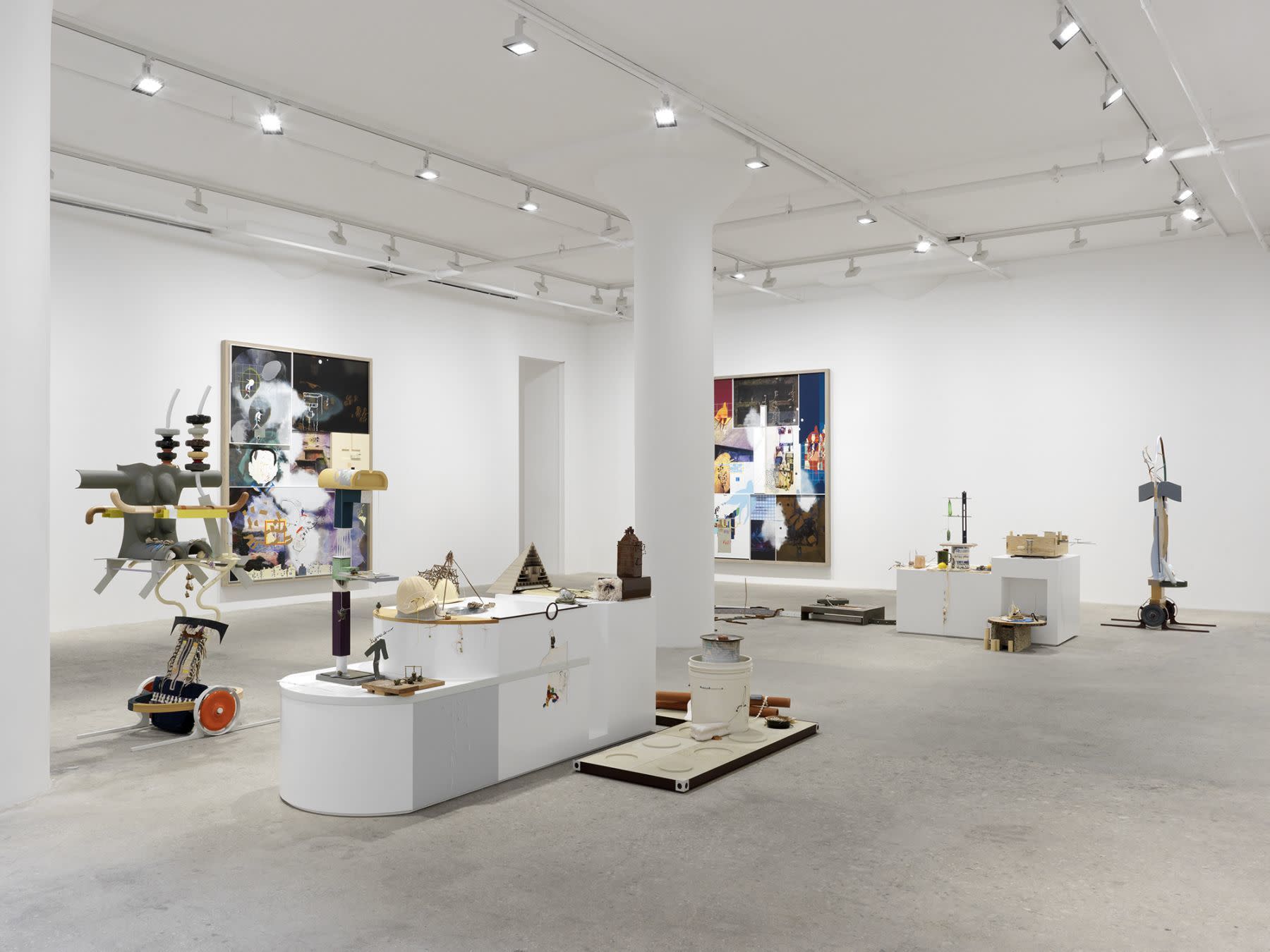
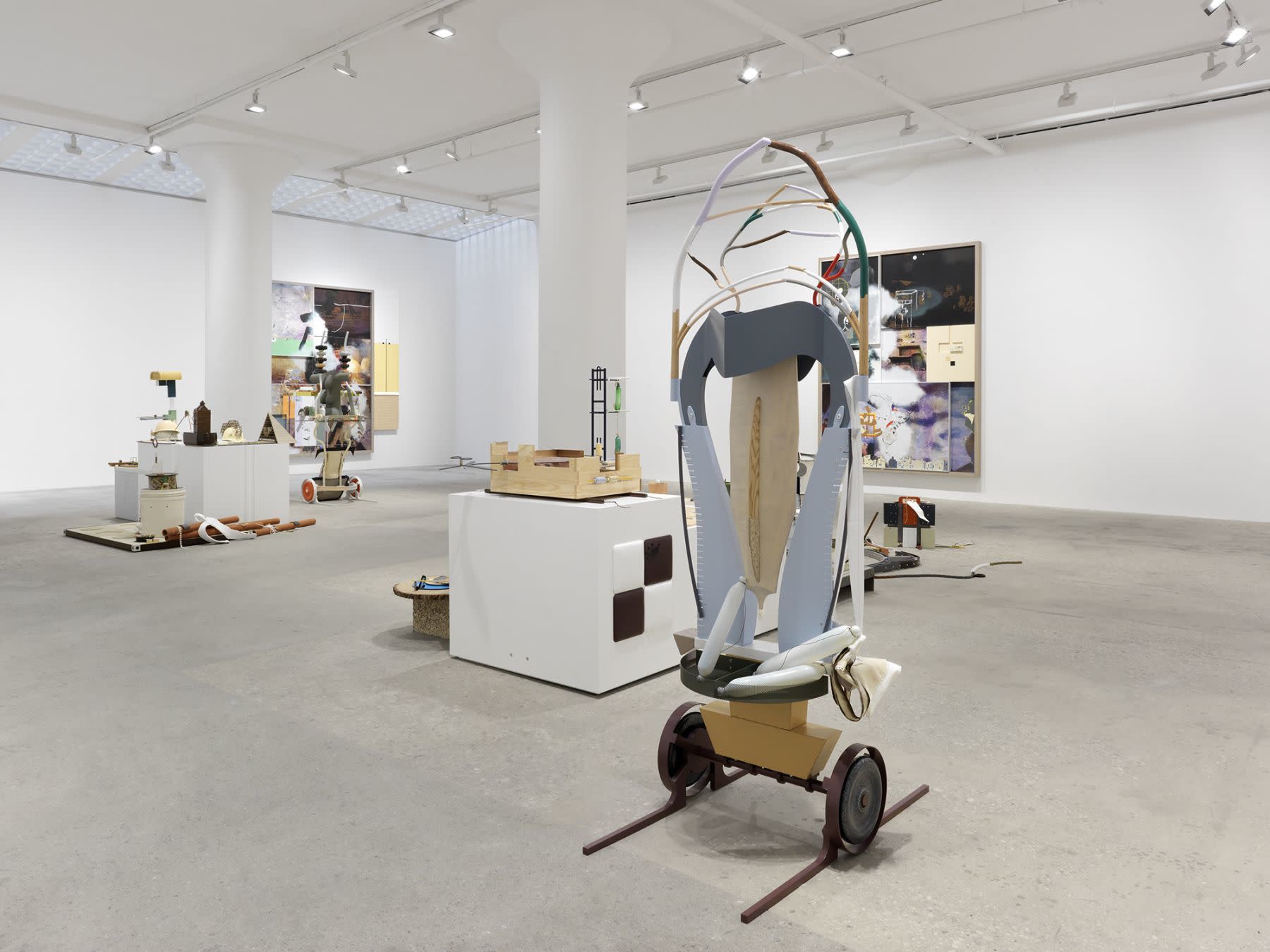
Installation views of Helen Marten’s Eucalyptus, Let Us In, 2016, at Greene Naftali.
Did Marten want to share the attention?
Marten may have shared the award to lighten the feeling of all eyes on her. “I feel frankly a little embarrassed about it all,” she told The Guardian about her Hepworth nomination, adding, “I hate things like this.” However, if Marten was trying to shift the attention onto her fellow Turner nominees, the move seems to have backfired. If anything, choosing to share the prize has only increased Marten’s status as an esteemed artist. She appears generous and thoughtful. It’s a classy move. Regardless of Marten’s intentions, sharing the monetary value of the award hasn’t equated to sharing the attention and recognition that goes along with it.
Was it simply a generous gesture?
Alternatively, was Marten’s choice to share the Turner Prize motivated by an egalitarian attitude? Maintaining an artist-based community could be threatened by the fame of winning the prize. Acquiring major awards like the Turner and the Hepworth Prize could alienate Marten from her peers. She might have shared the prize to try to level the hierarchy and stay close to her community. Maybe Marten also wholeheartedly felt that her fellow nominees were equally deserving of the award; after all, she a déclaré that she couldn’t think of “a more brilliant and exciting shortlist of artists to be part of.”
Did Marten share the award as an act of defiance?
An institutional stamp of approval, like a huge award, may brand an artist as politically correct. This is an identity not every artist wants. Criticism from conservative politicians like Michael Gove may actually be preferred publicity for an artist who wants to be seen as challenging the status quo. So perhaps Marten’s choice to share the prize is a defiance of the artistic institution. It could be a way for her to define herself as political or rebellious. (Although, in that case, refusing the prize altogether might have been a more effective choice.)
Was she trying to protect the value of her art?
Marten had a fast track to success with her first solo show in 2010 in Naples. Now she is represented by galleries in London, New York, Berlin, and Rome. Marten’s work has more than tripled in value in the past two years, going from approximately $25,000 to $100,000 for an installation. The Turner Prize win will surely expand her market and raise her prices. But this could actually have negative consequences.
Take, for example, the emerging artist Hugh Scott-Douglas. One of his works, which originally sold for $100,000, was recently auctioned for around $20,000. When a young artist’s work rises in value too fast, it can lead to a devaluation of their work down the road. This is especially true of late as the art market struggles. After a big surge of attention, and skyrocketing prices, there’s sometimes nowhere to go but down.
Scott-Douglas’ story is indicative of the difficulties young artists face with a rise of value at an early age. Rapid growth can taint the investment value of an artist’s work. In the shock of the two major awards, Marten may have been trying to offset this spike for the sake of her career. Young artists should want their investment value to rise at a steadier and more gradual increase.
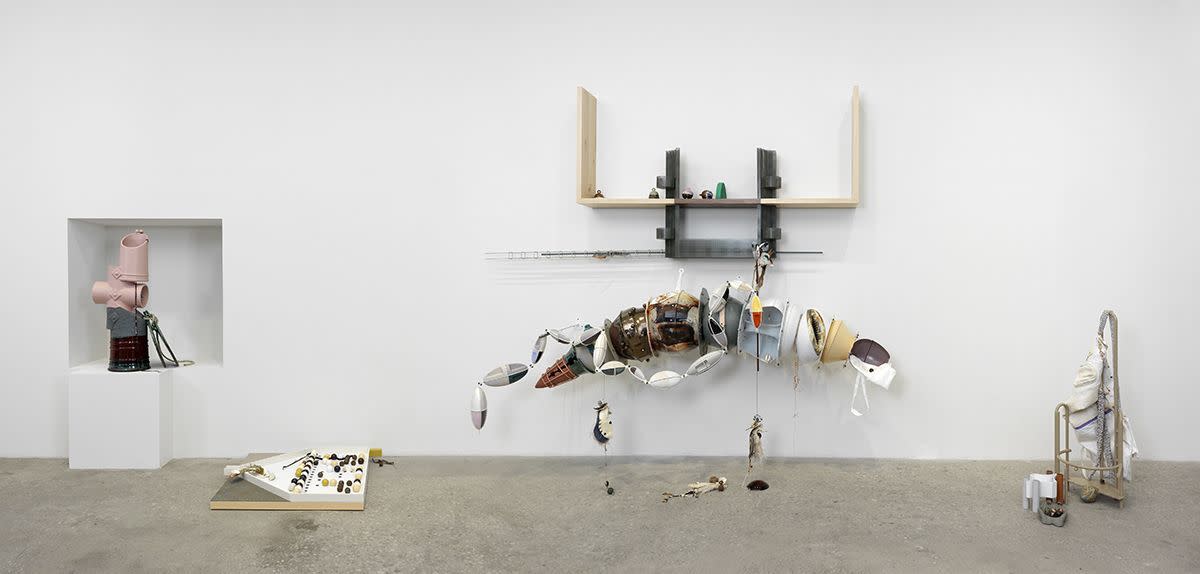
Helen Marten’s Brood and Bitter Pass, 2015, at Greene Naftali.
It would have been easy for Marten to happily accept the Turner Prize. But it seems instead this milestone in the artist’s life has lead to deep reflection and mixed feelings. Marten’s complex reaction is just the type of response a smart artist should have. It may not have achieved any of the possible goals we speculated on here, but it did reveal her thoughtfulness.
It is important to meditate on why Marten made the decision to share her prize. Does it reflect a flaw in the format of institutional awards? Marten seems to suggest this with her decision to share her winnings. Of course, art prizes do allow artists to sell work, finance projects, and make new exhibitions. These are fantastic outcomes. Still, Marten’s decision to share the Turner brings up important questions about how we value work, what is good art, and when public attention is bad or good.
Image d'en-tête via Artnet. Installation images via Greene Naftali.
